
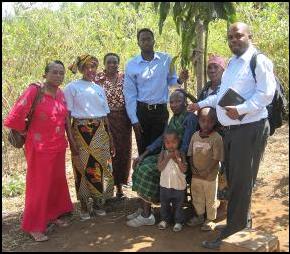

|
Know someone who’d be a great PiAf Fellow? As we recruit candidates for our 2011-2012 fellowship year, we need your help! Please tell your friends about PiAf and encourage them to apply.
PiAf is looking to place the highest caliber of young leaders in Africa. We accept applications from graduating seniors in the Class of 2011 and young alumni from any college or university in the U.S.
Prospective candidates should visit our Applicants page for more information. Application deadline is Friday, November 19, 2010. |
|
Please Join Us For Princeton in Africa’s 2010 Annual Benefit The Princeton in Africa Medal will be presented to Nicholas Kristof and Sheryl WuDunn Journalists and authors of Half the Sky Thursday, October 28th, 2010 6:00—9:00 p.m. Cocktails & Hors d’Oeuvres
One West 54th Street & the corner of 5th Ave. New York City
RSVP by October 15th—-Business attire
For more information and to purchase tickets: Email: cpersen@princeton.edu Call: 609.258.7215 Visit: princetoninfafrica.org
|

|
Libby Denniston (third from left) hands over the PiAf fellowship at Kucetekela Foundation in Zambia to ‘10-’11 PiAf Fellow Jamie Nadeau (third from right) |

|
Fellows’ Flyer |
|
August/September2010 |
|
News and views for and by Princeton in Africa Fellows |
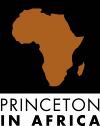


|
The glorious sights and sounds that I take in as I walk past Ugandans and admire the scenic views of Kampala’s many hills on my way to work, is all the assurance I need to know that this will be a year well-spent.
Most mornings I encounter schoolchildren laughing as they walk to their respective schools. I take in roosters crowing, ducks and pregnant goats – a constant reminder that I may be in a capital city but yes indeed I am in Africa. I pass through a shantytown of makeshift homes and stores, where women fry yams or roast corn over coal pots to sell. After a 15 minute walk, mostly downhill, I arrive on the main road, where the Plan shuttle picks me up around 8:05 AM every morning. Laughter and conversations quickly surround me, as more people board the bus on our daily route to Plan Uganda’s Country Office in Bugolobi. There is a genuine camaraderie amongst the staff at Plan Uganda that I have never felt nor witnessed in any of my past working environments. By 8:15 AM, we arrive at the office and after greeting everyone, I eventually settle into my corner desk to prepare for the day.
Plan Uganda promotes child-centered community development, in which children, families and communities are active and leading participants in their own development. As the Technical Writer my main role is to edit all grant reports. I am also working with the Gender Project Facilitator to implement a Rehabilitation of Commercial Sex Workers project in Kawempe division, arguably the poorest area of Kampala. Forty commercial sex workers and 80 vulnerable youth will be rehabilitated through vocational training and psychosocial support provided by Plan and its local partners. Last week I went to Kawempe to meet with district officials at the Community Development Office to see how we can work together and learn from each other. As ideas bounced back and forth between Plan and the district officials, a conversation I was a part of, it hit me that I am doing something I would not have had the opportunity to do had it not been for Princeton in Africa. Although my past internships have exposed me to the inner workings of nonprofit organizations, never before have I been entrusted with coordinating an actual project. I have the opportunity to make direct and immediate change.
In my six weeks in Kampala, I have been faced with many unexpected challenges, especially the July 11th twin bombings that killed dozens watching the World Cup finals. My experience will be shaped by the bomb blasts but it will not be defined by it. My walks, the camaraderie of my colleagues at work, even the warm greetings from market vendors I receive as I pass by their stalls, remind me of the joy of the simple things in life and the beauty of the human spirit – both of which we often take for granted in the West. I am meant to be here. This moment is a gift – a return to Africa to delve into real development projects with a reputable organization such as Plan International.
|
|
by Tiffany King, ‘10-’11 Fellow at Plan International in Uganda |
|
Notes from the Field |
|
The colorful craft market in Kampala |
|
Tiffany sailing with friends on Lake Victoria |

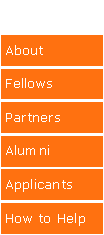

|
Notes from the Field |
|
Allie and Byron Austin, m2m Fellow from ‘09-’10 enjoying South Africa’s wine country |
|
Allie and Hannah Burnette, another Fellow at m2m, enjoy the view from Lion’s Head |
|
Side-view of a newly constructed maternity ward in Kamuli—a Plan International project |
|
by Allie Gips, ‘10-’11 EGG Foundation Fellow at mothers2mothers in South Africa |

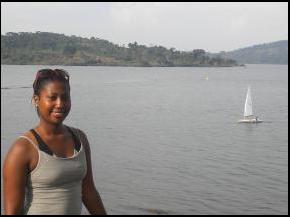
|
‘09-’10 Fellow Mark Stevens and ‘10-’11 Fellow Mary Reid Munford at African Impact in Zambia |

|
I usually like to frame my experiences through anecdotes, but that’s not an easy task in this case. The past month and a half have been filled with activities and thoughts of the most diverse nature, so finding that one perfect story is quite daunting. I’ve climbed Table Mountain and hiked its neighbor, Lion’s Head, by the light of the full moon; I’ve learned to operate a stick shift while driving on the left side of the road; I’ve seen penguins and ostriches and flowers that look like cupcakes; I’ve been to wineries and a hypnotist and a World Cup match; and all the while, I’ve been meeting wonderful people and living in one of the most beautiful places on the planet.
People like to say that Cape Town isn’t “real” Africa, and maybe they’re right. It has all the same yoga studios and coffee shops that you would find in a European or American city, down to a Saturday morning market that I swear was lifted straight out of Brooklyn (hipsters included). But in some ways, it’s what you don’t see that defines Cape Town… or rather, who you don’t see. The majority of Cape Town’s residents live in quite basic conditions in the townships skirting the city. Driving into town, you can trace the socioeconomic spectrum from shacks made of corrugated metal shipping containers to suburbs with tall trees and taller fences. In this sense, I do think Cape Town is real Africa: a microcosm of the tremendous inequalities that continue to haunt this continent. The fact that I can sip my latte only makes it that much more disturbing to remember that I am doing so in a country with some of the highest HIV rates in the world.
Which brings me to what I’m doing here. My fellowship is with mothers2mothers, a public health NGO that helps prevent mother-to-child transmission of HIV (PMTCT). From a scientific standpoint, mother-to-child transmission of HIV is highly preventable: if medical guidelines are followed, it drops to under five percent. But just because the science exists doesn’t mean that HIV-positive women are able to access it, especially given the limited time that medical staff have to explain the process and the immense stigma surrounding HIV. This is where mothers2mothers comes in. We train and employ Mentor Mothers, HIV-positive women who have themselves undergone the PMTCT process, to provide peer education and psychosocial support. These Mentor Mothers guide and counsel pregnant women as they navigate drug regimens and issues like disclosing their HIV status. In the end, what happens is far more than biomedical adherence; it is women empowered with knowledge, self-confidence, and self-efficacy.
So even if my role is mainly in the office and I’m not exactly “roughing it,” I feel confident that my time in South Africa is making a difference in some important way. At the very least, it is making a difference in how I move through the world, which seems like a good place to start. |




|
Mothers2mothers Fellows (past and present) Gather in Cape Town: Amy Saltzman 05-06, Byron Austin 09-10, Allie Gips 10-11 and Hannah Burnett 10-11
|
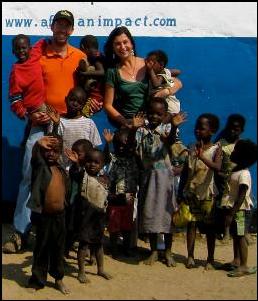
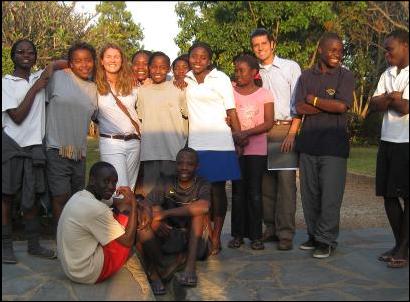
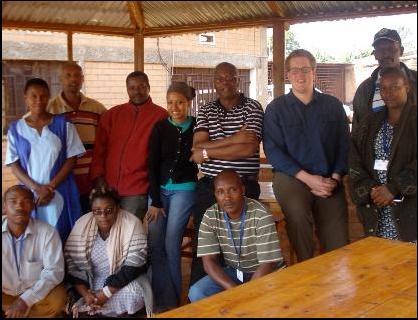
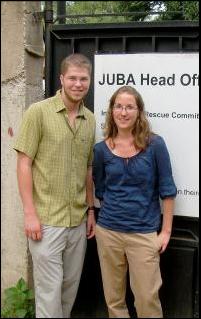
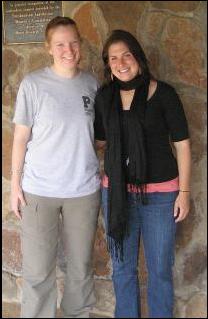
|
'09-'10 PiAf Fellow Luwam Berhane (fourth from left) and '10-'11 PiAf Fellow Tony Speare (third from right) at Lutheran World Federation in Burundi |
|
'09-'10 PiAf Fellow Katherine Anderson with ‘10-'11 PiAf Fellow Case Martin at the IRC in South Sudan |
|
'09-'10 PiAf Fellow Allison Williams with ‘10-'11 PiAf Fellow Theresa Laverty at Mpala in Kenya |
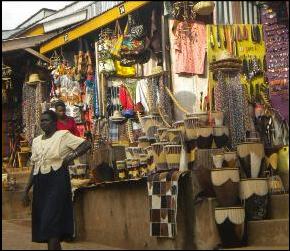
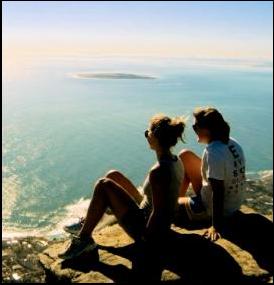
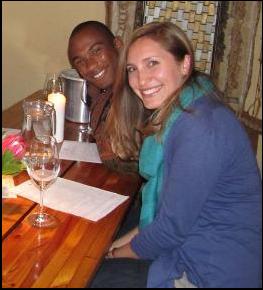
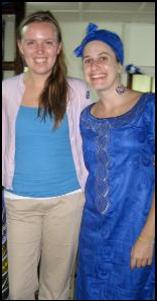
|
Katie Fackler ('10-'11) and Adrienne Clermont ('09-'10) at WFP in Benin |

|
Blog of the Month |
|
Name of blog: From Tigers to Lions Written by: Theresa Laverty, 2010-2011 Fellow at Mpala in Kenya
From a recent posting: “… Picture this: you arrive at a tented camp and your guide tells you that you’re five minutes from the park gate. After grabbing a bite to eat, you look out on the hillside and identify a few wildebeest. An hour later, you pull into the Oloolaimutia gate and within three minutes you’ve seen at least 1,000 wildebeest. Such was the beginning of my trip to the Maasai Mara...The open plains of the Mara was a perfect site to witness the vast numbers of animals including wildebeest, plains zebra, Thompson’s gazelle, Grant’s gazelle, impala, hartebeest, topi, Cape buffalo, elephants, Maasai giraffes, Maasai ostriches, secretary birds, and several species of vultures. The huge numbers of herbivores in the park allows for very high predator densities as well… in less than two full days of driving we saw a total of 37 lions. Let me repeat, 37 LIONS! That was more than 2 lions for every hour we were in the park…”
|

|
PiAf ‘s 2010 Benefit Honoring Nick Kristof & Sheryl WuDunn |

|
2009-10 PiAf Fellows welcome 2010-11 Fellows |

|
WE’RE RECRUITING! |
|
From August 2007 to June 2008 I was the PiAf fellow at the Baylor/Bristol-Myers Squibb’s pediatric HIV clinic in Maseru. In my goodbye speech I promised the staff and patients that after I finished my medical training in Canada—say, eight or ten years later—I would come back to visit Lesotho and maybe even work in the clinic. I figured that studying, research, and work would easily consume the next decade of my life, and that while I would miss Lesotho, there just wouldn’t be time to go back. x Two years later I cracked. The combination of the WorldCup happening right across the border and a few of my old friends nearing the end of their time in Lesotho made this summer the perfect time to return. With two years of med school under my belt I was also in a position to learn more about the medical side of the clinic’s operations. Within a week I’d emailed the clinic director and bought a plane ticket.
I arrived in Lesotho at the beginning of winter. If my second trip to Lesotho felt a little less magical than the first, it was also much less stressful. I knew the drill at the clinic and remembered a few Sesotho phrases. Most of all, I wasn’t in the exciting but daunting situation of having to invent a role for myself at the clinic and keep busy for a year. In my seven weeks at the clinic I worked on a couple of independent projects and, one or two days I week, I shadowed doctors in the clinic or referral hospital. I made it to Bloemfontein to see a couple of World Cup games, including Germany’s infamous 4-1 drubbing of England.
Public health-wise, had anything changed? Hard data would be more reliable than my impressions, but on the surface it looked like progress had been made. More patients across the country were on ART and health care access in the outlying districts—a traditional weak point—was being improved. The Baylor/Bristol Myers-Squibb clinic itself had opened satellite centers in rural Lesotho. They were also employing more Basotho medical officers, nurses, social workers, and support staff than when I left and now are well down the road to self-reliance. Maseru itself has become far from a hardship posting. A few months ago they opened a glitzy American-style mall, complete with cafés, a movie theatre, and a KFC (!).
It was gratifying to see some of the projects that I helped to start two years ago are still going strong. The teen support group was founded in early 2008 with eight regular members. The membership has grown to over 200, and under the guidance of Baylor/Bristol Myers-Squibb staff (including PiAfers Stu Malcolm and Whitney Williams) the programming has become a lot more sophisticated. 2008 also saw the beginning of the clinic’s partnership with Hole in the Wall and Sentebale to hold a week-long summer camp for our teen patients. This year, the clinic organized four weeks of summer and winter camp, serving kids from Maseru and beyond. Since 2006 the patient roster has expanded incredibly and the Baylor/Bristol-Myers Squibb Children's Centers’ reach has extended to all 10 of Lesotho’s districts—something that can at least in part be credited to the outreach work of David Bartels (’06-’07) and subsequent PiAf fellows.
I’ll always be grateful to Princeton in Africa and to Baylor. Salang hantle (stay well), and good luck to the PiAf fellows of 2010-2011. |

|
by David Cape, ‘07-’08 Fellow at the Baylor/Bristol-Myers Squibb Children's Centers , Lesotho |
|
Update From PiAf Alumnus |
|
David taking some time off work in Lesotho |
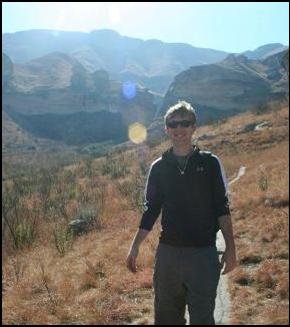
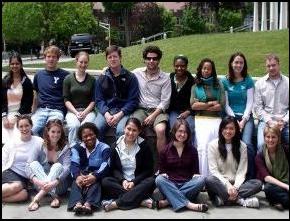
|
David’s ‘07-’08 Fellows class photo at orientation. David is in the middle of the back row. |
|
Making my way to work every morning is strikingly different from the leisurely strolls across McCosh Walk and Firestone Plaza that I grew accustomed to over the past four years. I make the trip in one of two ways: bajaji or daladala. No two daladala rides are ever the same. The vehicle comes to a (rolling) stop, you check your personal space at the door, and enter a small bus that may be nearly empty but after a few stops is guaranteed to be full. You are sandwiched between a businessperson with a briefcase, a trader carrying a large bag of oranges, and a small child heading to school. You’re back is crooked, because you are a bit too tall for the ceiling, but you somehow manage to take a peek out the window to make sure you haven’t missed your stop. As you catch a glimpse of the mass of people aiming to board the already packed bus, you imagine this must be what a popcorn kernel feels like in the microwave. It’s hot and sticky, and you know the bag will explode if one more kernel pops. Somehow it doesn’t, and everyone makes it on in good spirits. The best daladala ride I had was on one of these morning commutes when exactly those conditions didn’t stop the driver from blowing out his speakers with the timeless, universal rap classic, In Da Club by 50 cent. I’ve never been much of a morning person, but the prospect of getting on a bus with a dozen people of all ages singing along in Tanzanian accents to music you normally reserve for after the sun goes down might be changing that. If I decide to go the less exciting route, there is a bajaji driver I’ve grown quite fond of, Juma, who takes me to work without charging me the foreigners’ rate. I like to think my feelings for him are reciprocated. A bajaji is a three-wheeled, roofed motorcycle with a bench strapped behind the driver. It’s a slow, inexpensive means of transportation and an awfully pleasant way to take in the Indian Ocean’s cool breeze. My commute brings me to the Dar es Salaam offices of Africare - Tanzania, a US based NGO. I am attached to the Kaya Community Care Initiative. Kaya means home in Kiswahili, and the program coordinates and trains volunteers to provide home based care to people living with HIV in the northern Tanzanian regions of Mara and Manyara. I travelled to this gorgeous part of the country a few weeks ago and saw firsthand the work the organization does. What will stay with me the longest from the first breaths of my trip are the resiliency and compassion shown by Africare’s volunteers. I met a man who rode a bicycle five hours the previous day to the hospital to pick up medication for a neighbor. He made the mountainous trip with his neighbor as a passenger, and such trips are routine for him and all of the other volunteers. Fortunately my job affords the opportunity to travel extensively. I’ve been to three regions (provinces) and dozens of cities and towns, excluding my own, in the six weeks I have been in Tanzania. The wealth of the country’s culture and the energy of its landscape are not easy to verbally represent, but suffice it to say the car and bus rides quoted at six hours that take 12 are entirely worth the opportunity to see as much of the country as I can. It amazes me how much I have seen and how much more there is left. I hope you will follow the rest of the journey at pintoadhola.blogspot.com. |

|
by Pinrto Adhola ‘10-’11Fellow at Africare, Tanzania |
|
Notes From The Field |
|
Pinto in Babati, Manyara with Africare staff and a family receiving services from Africare. |
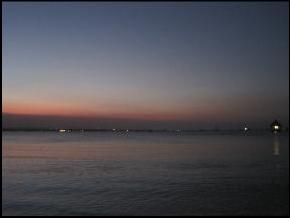
|
The sunset over the Indian Ocean behind Pinto’s house in Dar es Salaam. |
|
—Update from alumnus David Cape (Baylor/Bristol-Myers Squibb Children's Centers Lesotho ‘07-’08) and Highlights from 2010-2011 Fellows Tiffany King in Uganda, Allie Gips in South Africa and Pinto Adhola in Tanzania. |
